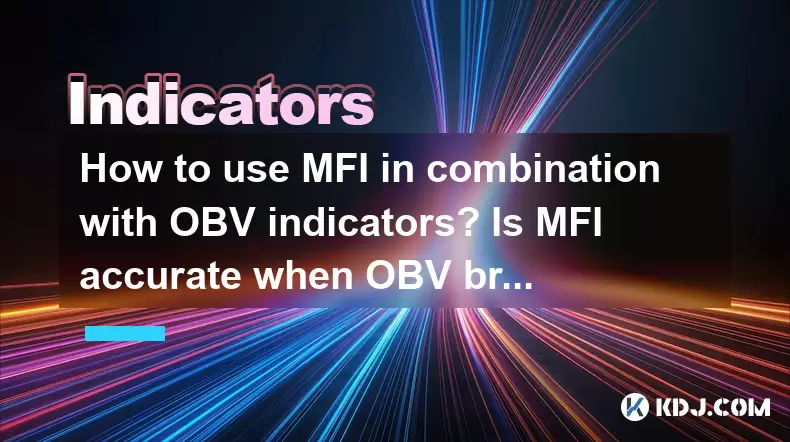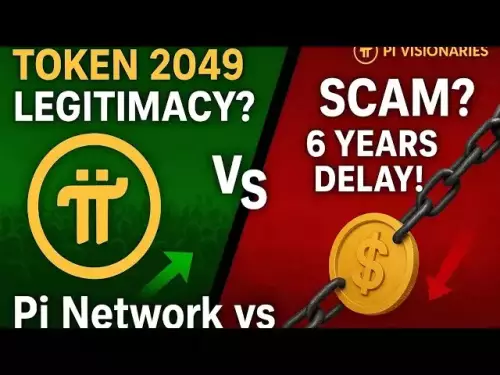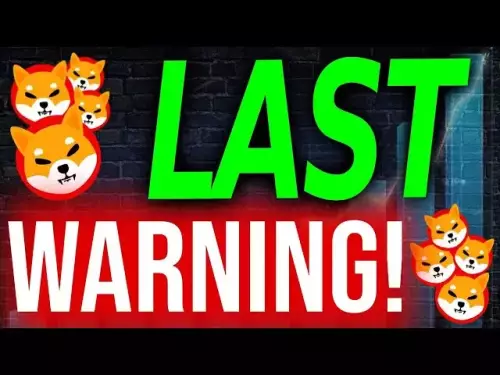-
 bitcoin
bitcoin $114779.865156 USD
2.30% -
 ethereum
ethereum $4226.519789 USD
2.39% -
 tether
tether $1.000545 USD
0.04% -
 xrp
xrp $2.890223 USD
0.92% -
 bnb
bnb $1030.029301 USD
2.95% -
 solana
solana $212.824944 USD
1.69% -
 usd-coin
usd-coin $0.999757 USD
0.01% -
 dogecoin
dogecoin $0.234961 USD
-0.27% -
 tron
tron $0.337174 USD
0.42% -
 cardano
cardano $0.804783 USD
0.09% -
 hyperliquid
hyperliquid $45.748770 USD
-2.85% -
 chainlink
chainlink $21.699170 USD
0.82% -
 ethena-usde
ethena-usde $1.001452 USD
0.08% -
 avalanche
avalanche $30.237800 USD
1.14% -
 stellar
stellar $0.372604 USD
1.52%
How to use MFI in combination with OBV indicators? Is MFI accurate when OBV breaks through?
MFI and OBV help traders identify trends and reversals in crypto markets, enhancing accuracy when used together to confirm signals.
May 22, 2025 at 05:42 pm

Introduction to MFI and OBV Indicators
In the cryptocurrency trading world, technical analysis plays a crucial role in making informed decisions. Two popular indicators that traders often use are the Money Flow Index (MFI) and the On-Balance Volume (OBV). These indicators provide insights into price movements and volume trends, helping traders gauge the strength and direction of market trends. This article will explore how to use MFI in combination with OBV indicators and discuss the accuracy of MFI when OBV breaks through.
Understanding the Money Flow Index (MFI)
The Money Flow Index (MFI) is an oscillator that uses both price and volume to measure buying and selling pressure. It ranges from 0 to 100 and is often used to identify overbought and oversold conditions in the market. An MFI value above 80 typically indicates an overbought market, while a value below 20 suggests an oversold market.
- Calculation of MFI:
- Typical Price (TP): Calculated as (High + Low + Close) / 3
- Raw Money Flow (RMF): Calculated as TP x Volume
- Positive and Negative Money Flow: Separated based on whether the current TP is higher or lower than the previous TP
- Money Flow Ratio (MFR): Calculated as the sum of Positive Money Flow over a period divided by the sum of Negative Money Flow over the same period
- MFI: Calculated as 100 - (100 / (1 + MFR))
Understanding the On-Balance Volume (OBV)
The On-Balance Volume (OBV) is a cumulative indicator that adds volume on up days and subtracts volume on down days. It is used to confirm price trends and detect potential reversals by comparing the OBV line with price movements.
- Calculation of OBV:
- If the closing price is higher than the previous close, the volume is added to the OBV
- If the closing price is lower than the previous close, the volume is subtracted from the OBV
- If the closing price is equal to the previous close, the OBV remains unchanged
Combining MFI and OBV for Analysis
To effectively use MFI in combination with OBV, traders need to look for confluence between these indicators. This means identifying situations where both indicators suggest the same market condition, thereby increasing the reliability of the signals.
- Identifying Trends:
- If both MFI and OBV are rising, it suggests a strong bullish trend
- If both MFI and OBV are falling, it suggests a strong bearish trend
- Confirming Reversals:
- If MFI enters the overbought zone (>80) and OBV starts to decline, it may signal an impending bearish reversal
- If MFI enters the oversold zone (
- Divergence:
- Bullish Divergence: If the price makes a lower low, but MFI and OBV make higher lows, it suggests a potential bullish reversal
- Bearish Divergence: If the price makes a higher high, but MFI and OBV make lower highs, it suggests a potential bearish reversal
Using MFI and OBV in Trading Strategies
To implement a trading strategy using MFI and OBV, follow these steps:
- Setting Up the Indicators:
- Add MFI and OBV to your trading chart
- Set the MFI period to 14 days, as this is a commonly used setting
- Ensure the OBV is plotted on the same chart for easy comparison
- Monitoring for Signals:
- Watch for MFI to cross above 80 or below 20 to identify potential entry or exit points
- Monitor OBV to confirm the trend or reversal indicated by MFI
- Look for divergence between price and the indicators to anticipate potential trend changes
- Executing Trades:
- Long Entry: When MFI is below 20 and OBV is rising, consider entering a long position
- Short Entry: When MFI is above 80 and OBV is falling, consider entering a short position
- Exit Strategy: Monitor MFI and OBV for signs of trend exhaustion or reversal, and exit positions accordingly
Accuracy of MFI When OBV Breaks Through
The accuracy of MFI when OBV breaks through depends on several factors, including the strength of the trend and the presence of other confirming indicators. While MFI can provide valuable insights into market conditions, its accuracy can be enhanced when used in conjunction with OBV.
- Breakthrough Scenarios:
- If OBV breaks through a significant resistance or support level, and MFI is in the overbought or oversold zone, it can confirm a strong trend continuation or reversal
- If OBV breaks through without a corresponding signal from MFI, it may indicate a false breakout or a less reliable signal
- Enhancing Accuracy:
- Use additional technical indicators such as Moving Averages, RSI, or MACD to confirm signals from MFI and OBV
- Consider the overall market context and news events that may impact cryptocurrency prices
- Backtest your strategy using historical data to assess the performance and reliability of MFI and OBV signals
Practical Example of MFI and OBV Combination
Let's consider a practical example to illustrate how MFI and OBV can be used together in a trading scenario:
Scenario: A trader is monitoring Bitcoin (BTC) and notices that the MFI has entered the overbought zone (>80) while the OBV is showing a decline.
- Analysis:
- The overbought MFI suggests that the market may be due for a correction
- The declining OBV confirms the potential for a bearish reversal
- Action:
- The trader decides to enter a short position on BTC, anticipating a price decline
- The trader sets a stop-loss above the recent high to manage risk
- The trader monitors MFI and OBV for signs of trend exhaustion or reversal to exit the position
FAQs
Q1: Can MFI and OBV be used effectively in volatile markets?A1: Yes, MFI and OBV can be useful in volatile markets as they help identify potential overbought and oversold conditions and confirm trends. However, traders should use additional indicators and risk management strategies to navigate volatility.
Q2: How often should I check MFI and OBV for trading decisions?A2: The frequency of checking MFI and OBV depends on your trading style. For day traders, monitoring these indicators every few hours or even more frequently may be necessary. Swing traders may check them daily or weekly.
Q3: Are there any other indicators that complement MFI and OBV well?A3: Yes, other indicators that complement MFI and OBV include the Relative Strength Index (RSI), Moving Averages, and the Moving Average Convergence Divergence (MACD). These can provide additional confirmation of trends and reversals.
Q4: How can I backtest a strategy using MFI and OBV?A4: To backtest a strategy using MFI and OBV, you can use trading software or platforms that allow historical data analysis. Set up the indicators with your chosen parameters, apply your trading rules, and analyze the performance of your strategy over a selected period.
Disclaimer:info@kdj.com
The information provided is not trading advice. kdj.com does not assume any responsibility for any investments made based on the information provided in this article. Cryptocurrencies are highly volatile and it is highly recommended that you invest with caution after thorough research!
If you believe that the content used on this website infringes your copyright, please contact us immediately (info@kdj.com) and we will delete it promptly.
- BlockDAG, DOGE, HYPE Sponsorship: Crypto Trends Shaping 2025
- 2025-10-01 00:25:13
- Deutsche Börse and Circle: A StableCoin Adoption Powerhouse in Europe
- 2025-10-01 00:25:13
- BlockDAG's Presale Buzz: Is It the Crypto to Watch in October 2025?
- 2025-10-01 00:30:13
- Bitcoin, Crypto, and IQ: When Genius Meets Digital Gold?
- 2025-10-01 00:30:13
- Stablecoins, American Innovation, and Wallet Tokens: The Next Frontier
- 2025-10-01 00:35:12
- NBU, Coins, and Crypto in Ukraine: A New Yorker's Take
- 2025-10-01 00:45:14
Related knowledge

What is a tower bottom candlestick pattern? Does it have a high success rate?
Sep 22,2025 at 07:18am
Tower Bottom Candlestick Pattern Explained1. The tower bottom candlestick pattern is a reversal formation that typically appears at the end of a downt...

What is a black hole pattern in the MACD indicator? Is it a cause for concern?
Sep 21,2025 at 06:54pm
Bitcoin's Role in Decentralized Finance1. Bitcoin remains the cornerstone of decentralized finance, serving as a benchmark for value and security acro...

How can I use the psychological line (PSY) to determine market sentiment?
Sep 17,2025 at 02:19pm
Understanding the Psychological Line (PSY) in Cryptocurrency TradingThe Psychological Line, commonly referred to as PSY, is a momentum oscillator used...

How can I determine if a double top pattern has officially formed?
Sep 21,2025 at 03:18am
Understanding the Structure of a Double Top Pattern1. A double top pattern consists of two distinct peaks that reach approximately the same price leve...

What is the Golden Valley pattern on the moving average? Is it better than the Silver Valley pattern?
Sep 21,2025 at 02:54pm
Understanding the Golden Valley Pattern in Moving Averages1. The Golden Valley pattern is a technical formation observed in cryptocurrency price chart...

What does a death cross of the RSI in the strong zone (above 50) mean?
Sep 17,2025 at 10:54pm
Understanding the Death Cross in RSI Context1. The term 'death cross' is traditionally associated with moving averages, where a short-term average cro...

What is a tower bottom candlestick pattern? Does it have a high success rate?
Sep 22,2025 at 07:18am
Tower Bottom Candlestick Pattern Explained1. The tower bottom candlestick pattern is a reversal formation that typically appears at the end of a downt...

What is a black hole pattern in the MACD indicator? Is it a cause for concern?
Sep 21,2025 at 06:54pm
Bitcoin's Role in Decentralized Finance1. Bitcoin remains the cornerstone of decentralized finance, serving as a benchmark for value and security acro...

How can I use the psychological line (PSY) to determine market sentiment?
Sep 17,2025 at 02:19pm
Understanding the Psychological Line (PSY) in Cryptocurrency TradingThe Psychological Line, commonly referred to as PSY, is a momentum oscillator used...

How can I determine if a double top pattern has officially formed?
Sep 21,2025 at 03:18am
Understanding the Structure of a Double Top Pattern1. A double top pattern consists of two distinct peaks that reach approximately the same price leve...

What is the Golden Valley pattern on the moving average? Is it better than the Silver Valley pattern?
Sep 21,2025 at 02:54pm
Understanding the Golden Valley Pattern in Moving Averages1. The Golden Valley pattern is a technical formation observed in cryptocurrency price chart...

What does a death cross of the RSI in the strong zone (above 50) mean?
Sep 17,2025 at 10:54pm
Understanding the Death Cross in RSI Context1. The term 'death cross' is traditionally associated with moving averages, where a short-term average cro...
See all articles










































































